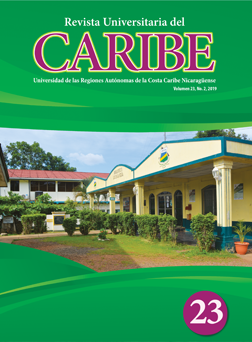Travelled Path in the Institutional Planning and Self-Assessment processes of the Intercultural Community University
DOI:
https://doi.org/10.5377/ruc.v23i2.8942Keywords:
Self – Assessment, Evaluation, Institutional planningAbstract
At the University of the Autonomous Regions of the Nicaraguan Caribbean Coast, the reconstruction of the path of the institutional planning and evaluation process allowed the critical compilation of the experiences and demonstrate the development and growth of the institution. For this recreation of experiences, the guide “Paths to recreate and walk the experience with an intercultural gender perspective” was used, which led to experiencing the three stages of strategic planning and the two institutional self-evaluation processes that were developed. In this sense, the importance of having a variety of points of view, documentary analysis, as well as the fulfillment of a methodological route that was carried out at five different times and with particular purposes was recognized. It should be noted that the systematization process included the university community of the four URACCAN campuses and extensions, as well as the headquarter office, where the informants narrated their experiences of the 3 planning processes and the institutional evaluation processes. It was demonstrated that, at this stage, the planning and evaluation teams learned to walk hand in hand to ensure those processes. A greater institutional ordering and articulation of the areas was achieved, as a result of this, it was created the University Management System, fundamental aspects that had to do with the intercultural community university model were strengthened, the university model and its outward projection were consolidated, allowing so the achievement of local, national and international recognition.
Downloads
578
HTML (Español (España)) 225
EPUB (Español (España)) 233
Resumen (Audio) (Español (España)) 163
Abstract (Audio) 198
Downloads
Published
How to Cite
Issue
Section
License
Propietario de los derechos de autor de los artículos: Los autores guardan los derechos de autor.

Esta revista está bajo una licencia de Creative Commons Reconocimiento-NoComercial-SinObraDerivada 4.0 Internacional. Esta licencia permite que otros puedan descargar las obras y compartirlas con otras personas, siempre que se reconozca su autoría, pero no se pueden cambiar de ninguna manera ni se pueden utilizar comercialmente.

